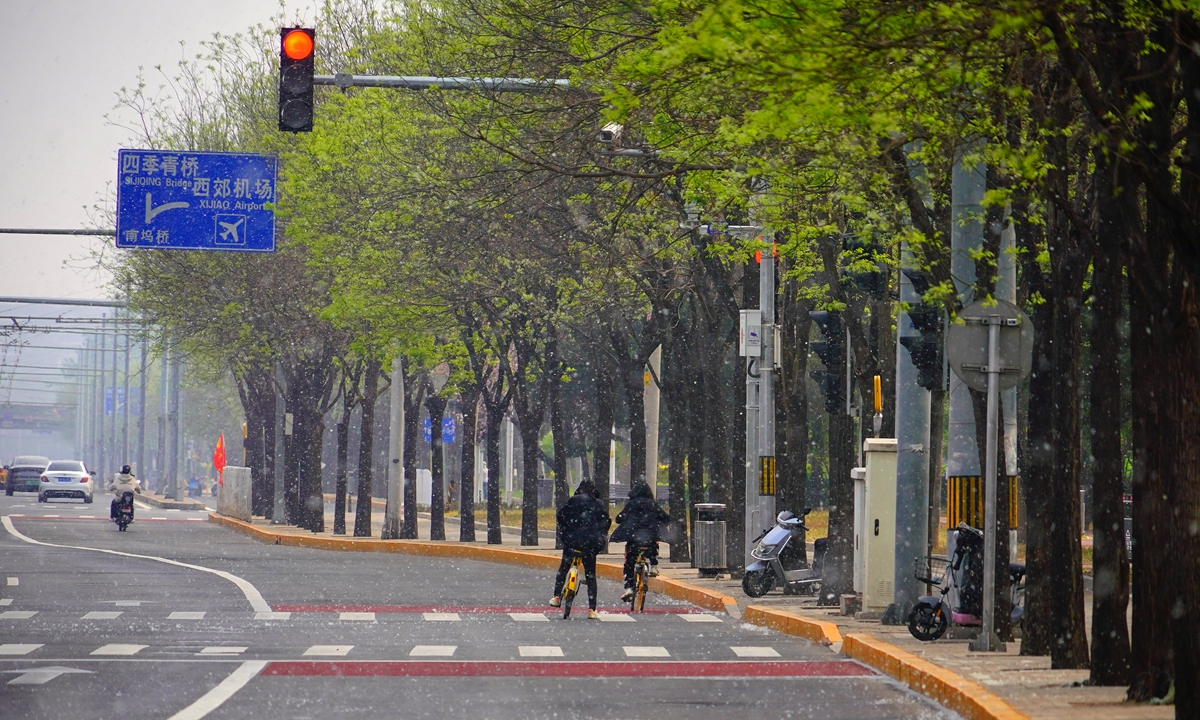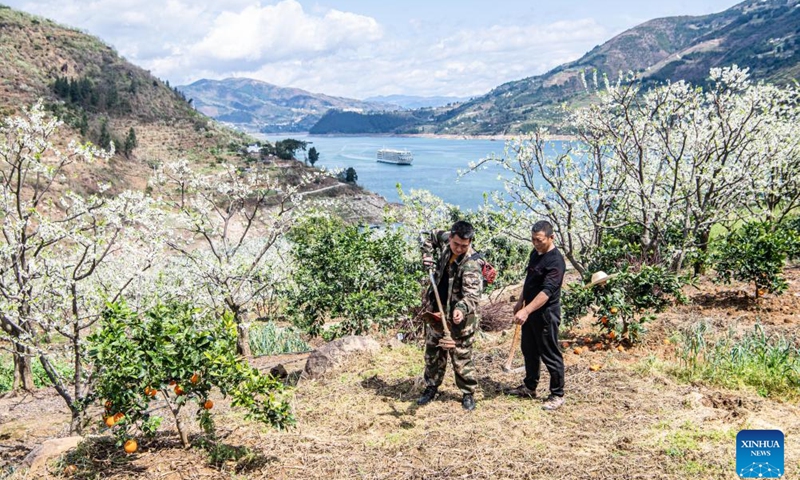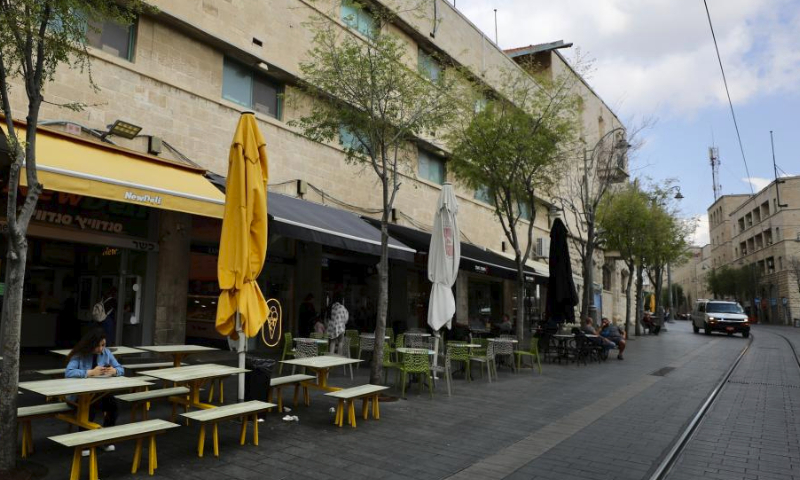
Beijing enters the peak poplar and willow catkins period on April 12, 2024. Photo: VCG
The flying catkins of poplar and willow trees, often called "April snow," have been a longstanding issue for Beijing residents. After entering the season on April 7, Beijing entered the peak poplar and willow catkins period on Friday. Various departments in Beijing have further strengthened joint prevention and control measures, using multiple methods to carry out precise governance in order to better control the impact of this issue on the daily lives of residents.
During this catkins season, the Beijing Municipal Forestry and Parks Bureau has increased cooperation with urban management departments, health departments, and meteorological departments to include the prevention and control of flying catkins in the scope of overall urban management.
"We are informing residents about the times when flying catkins are present, the key areas, and increasing cleaning and humidification efforts to suppress flying catkins in a timely manner," said Zhang Bo, deputy director of the Science and Technology Division of the Beijing Municipal Forestry and Parks Bureau, according to China Central Television (CCTV).
Beijing is currently implementing comprehensive control measures in multiple parks and streets in the main urban area to reduce the impact of flying catkins on people's lives. The public has also been urged to wear dust masks, sunglasses, goggles or scarves to block flying catkins.
In Beijing's main parks and roads, relevant departments have been conducting daily wetting and cleaning operations in key areas recently. They use high-pressure water guns to knock down floating catkins, increase surface humidity, and greatly reduce flying fluff, according to CCTV.
In addition to increasing humidity levels, another method that has been taken to control the generation of cottonwood fluff in Beijing is to prune off some branches before the fluff is produced.
In addition to physical control methods, the forestry authority has also adopted technological methods such as grafting male plants and improving tree species through scientific breeding. One artificially bred male non-fluffy poplar tree called "Beijing Male 1" will reach a height of about 5 meters in another two years, and will be used as urban landscape trees in Beijing.
In 2023, Beijing replaced around 20,000 old, weak, and diseased poplar trees with cultivated male non-fluffy poplar trees. Currently, Beijing has bred and stored more than 200,000 high-quality non-fluffy willow seedlings, according to media reports.
Since April 7, flying catkins, the cotton-like seed clusters that cause discomfort and fire hazards, have been spotted in the central and southern parts of Beijing. Three high-incidence periods of poplar and willow catkins have been predicted for mid-April, late April to early May, and mid-May, affecting downtown areas as well as mountainous regions around the capital for about 50 days, according to the Xinhua News Agency.
For a long time, the floating catkins of willow trees in spring have been a nuisance for Beijing residents. Many Beijing residents told the Global Times that they feel uncomfortable when they go out during the peak season. Several residents with allergies and respiratory diseases have described the catkin season as "one of the biggest issues of living in Beijing."
"Every April is a critical time for me to seriously consider moving away from Beijing," a Beijing resident surnamed Wang told the Global Times. "I am certain that if I decide to leave Beijing, floating willow catkins will be a significant influencing factor."
Another Beijing resident surnamed Hong shared a video of her visit to a park in Beijing on Sunday, in which a small river was almost covered with white willow catkins, with more continuously falling from the sky. "My weekend experience was almost ruined by this 'snow in April,'" she complained.
Currently, poplar and willow trees in Beijing account for about 40 percent of the total tree coverage, with approximately 5.7 million of these trees monitored in the main urban area.
Poplar and willow trees rely on the wind to spread their seeds, with female trees forming catkins. Due to the fact that female trees grow taller and stronger earlier than males, the majority of trees planted in Beijing over the past few decades have been female, said Zhang. Currently, the proportion of female willow trees in Beijing remains over 70 percent, while male trees make up only slightly more than 20 percent.
According to the Liaowang Institute, a Chinese think tank, a female poplar tree can produce about a kilogram of catkins during the spring breeding season.
The removal or felling of willow trees has been proposed by some residents for a period of time, but this was ultimately not considered a viable solution. The poplar and willow trees are native tree species in Beijing and were extensively planted after the city's urban development began. The average height of a willow tree is about 25 meters, and without them, Beijing's green skyline would decrease by approximately 10 meters, causing significant harm to the city's landscape and ecology, Zhang explained.
Poplar and willow trees played a pivotal role in combating sandstorms in Beijing 50 years ago. In 2015, Beijing's municipal authorities decided to prohibit the planting of female poplar and willow trees in landscaping and greening projects.
Che Shaochen, a senior engineer at the Beijing Institute of Landscape and Gardening Science, noted that as a normal physiological phenomenon of plants, catkins cannot be avoided. However, with long-term precise management, the total amount of catkins will decrease, and the impact will become increasingly minor." In the past, the first peak period of catkins lasted 5-10 days, but now it is only 3-5 days, and it will soon pass."



